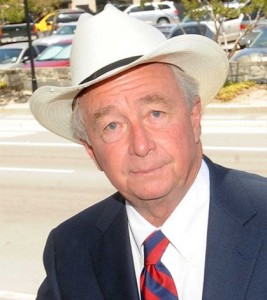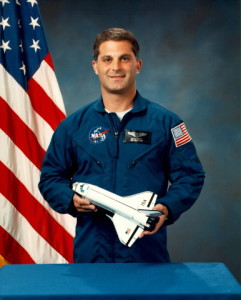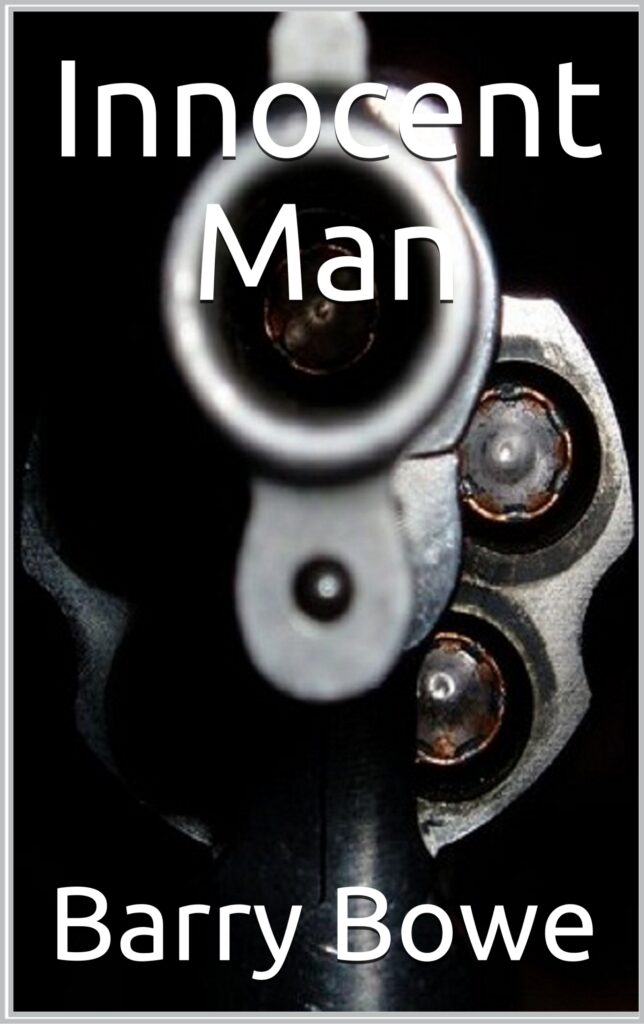I’m writing this for Jon Johnson – who happens to be one of my favorite on-air hosts at WIP. But, of course, everyone is welcome – and encouraged – to read it.
Jon’s a NASA buff and I wanted him to have some history and background on the FBI’s undercover sting of the Johnson Space Center that transpired during the early 1990s.
Murdering Bastards
With hopes of getting a book and/or movie deal, I became part of the story in 1995 when I went to Houston to work for one of the bravest individual’s I’ve ever met. His name is Dale Brown. He’s a patriot and he fought the FBI when it would’ve been so much easier to take a slap on the wrist and continue with his life as if nothing happened.
In the process, I got to work on Dale’s defense team with one of the highest-profiled defense attorneys in America. His name is Dick DeGuerin and his list of clients include Branch Davidian leader David Koresh, former Texas governor Kay Bailey Hutchinson, and Lenny Dykstra and Keith Hernandez. when they played for the Mets.
But it does not include Oklahoma City bomber Timothy McVeigh.
We were sitting in Dick’s office one afternoon going over strategy for Dale’s trial in federal court when the phone rang. It was Timothy McVeigh asking Dick to represent him.
“Son,” Dick told McVeigh with the twang of a Texas cattle rancher, “I don’t defend murdering bastards.”
The Seeds
In 1991, the Inspector General’s Office (IGO) at the Johnson Space Center (JSC) in Houston received more than 300 complaints alleging bribery, kickbacks, and mismanagement on the part of dozens of NASA officials and contractors.
That volume of complaints overloaded the IGO.
The IGO turned to the FBI for help.
Operation Lightning Strike
The FBI’s response was the creation of an undercover sting dubbed Operation Lightning Strike. The FBI put Special Agent Hal Francis in charge of the operation – which then ran from December of 1991 thru June of 1993.
Between you and me, NASA was a $5-billion industry at that time and corruption definitely existed. But Hal Francis decided to shortcut the detection process. Instead of digging and clawing to determine the guilty parties, he decided to create his own source of corruption and entrap innocent parties into committing crimes.
The Lithotripter
A wealthy businessman arrived at the Johnson Space Center near the end of 1991. His name was John Clifford and he owned Atlanta-based Southern Technologies Diversified (STD). His company had developed a unique piece of hardware that used ultrasound technology to dissolve kidney stones – thus negating the need for invasive surgery.
This was important to NASA for two reasons:
- The weightlessness of space travel is a perfect medium for the leeching of calcium from the astronauts’ bones. That leeching leads to the formation of tiny stones that can cause immense pain to the astronauts during missions.
- The lithotripter already existed, but it was so large that it had to be transported by tractor-trailer. But STD’s lithotripter was small enough to fit perfectly inside NASA’s spacecraft. It was, in essence, a mini-lithotripter.
The Scam
But nothing was the way it seemed.
In reality:
- Wealthy businessman John Clifford was FBI agent Hal Francis.
- Southern Technologies Diversified was a fictitious company – its name purposely chosen by Francis because it was an acronym for sexually transmitted disease.
- The mini-lithotripter was a 1983 Eastern Tech ultrasound device in disguise.
The FBI agent then went about luring members of the JSC community into introducing him to high-ranking NASA officials and selling those NASA officials on the idea of purchasing his fictitious mini-lithotripter and using it on manned spaceflights.
Once that could be accomplished – and the mini-lithotripter received NASA’s seal of approval – it would be marketed to the private sector and be worth millions.
Dale Brown
Dale Brown was a handsome, charming, 37-year-old aerospace engineer from Indiana. He grew up a straight-A student, Eagle Scout, and the son of a Lockheed jet propulsion worker.
“When I was three years old, I went to my first test-firing. I saw rocket firings in the desert, and I saw rocket firings at my dad’s work.”
A red-blooded American patriot, Dale Brown moved to Houston in the hopes of becoming an astronaut. When that dream failed, he remained in Houston, determined to do whatever he could to further the progress of America’s space program – including volunteering for missions in the vomit comet.
One of Dale’s best friends was astronaut David Wolf, who spent 122 days aboard Skylab in 1997 and 1998. Dale had Dave over to his house on several occasions and we became friendly during my visits to Houston.
Opportunity Knocks
Dale Brown was introduced to John Clifford, and Clifford hired Dale to work for him with STD. Clifford paid Dale $5,000 per month to sell his mini-lithotripter to NASA and to design and invent other aerospace products. He was also to be paid a 10 percent commission of all sales.
While he was trying to introduce the mini-lithotripter to NASA, Dale Brown invented another product while working for Clifford’s company – which he sold to Haliburton. But the FBI went to Haliburton behind Brown’s back and undermined the deal.
Nearly a year passed without Dale Brown making a single sale.
John Clifford then called Dale on the carpet and fired him for non-performance. By then Dale had become dependent upon his income from Clifford. And because Clifford was bad-mouthing him in the JSC community, Dale’s reputation took a hit and he found it impossible to find another job.
A few months passed without income.
With the bills mounting, Dale’s wife had an abortion and divorced him.
One day out of the blue, John Clifford contacted Dale Brown with an opportunity to get back on the payroll. By then, Dale was involved with designing a robotic device. Clifford said he’d heard about the robotic device and contacted the Army on Dale’s behalf. He told Dale that a purchasing officer from the Tobyhanna Army Depot in Pennsylvania was interested in the robotic device and he was coming to the JSC. Clifford told Dale that he’d already “sold” the robotic device as a favor to Dale. All Dale had to do was entertain the purchasing officer while he was in town and it was a done deal.
Dale jumped at it.
At the last minute, Clifford called with a change in plan. The purchasing officer couldn’t make the trip to Houston. Instead, his assistant was making the trip – his homosexual assistant. This homosexual assistant didn’t want to be entertained by the heterosexual Brown. Now, Clifford just wanted Dale to pass along some entertainment money to the homosexual assistant.
Clifford supplied $500 and Dale delivered it to the homosexual assistant in a motel room across from the Astrodome.
Bribery
Federal law considers such a transaction as bribery.
So Dale Brown had just been duped into bribing a federal purchasing officer. But in reality, there was no homosexual purchasing officer from Tobyhanna. The man Dale paid was an FBI agent in disguise.
The sale of the robotic device was never made.
John Clifford didn’t rehire Dale Brown and there was no more contact between the two men for several months.
Dale Brown went back to trying to invent new technology, make a living, and put his life back together.
Many Dale Browns
There were many Dale Browns at the space center.
FBI agent Hal Francis was perpetrating similar scams with dozens of members of the NASA community – all of them innocent men being duped into committing some sort of minor transgressions.
News Leaked
When news of Operation Lightning Strike was accidentally and prematurely leaked to the press, an uproar ensued. No arrests after more than a year and a half of investigation. What was up with that?
Manchurian Candidates
The FBI then strong-armed the men they’d entrapped.
One at a time, 13 men were arrested, transported to an empty warehouse, and isolated. The defendants were not permitted to contact lawyers.
When bright lights came on, each defendant was surrounded by well-armed FBI agents and John Clifford stepped forward and revealed his true identity.
Large white boards were unveiled in front of each defendant with:
- Long lists of the crimes they’d committed.
- The number of years of imprisonment they faced.
- The millions of dollars in fines they each faced.
Dale Brown was charged with 21 felonies totaling sixty years in prison and $1.25-million in fines.
The defendants were left alone for hours to stew.
These men were all hard-working family men with no criminal records.
This technique was similar to the North Korean method exposed in the classic movie Manchurian Candidate.
Plea Bargains
Eventually, each man was told that he could escape the punishment and fines by pleading guilty to reduced charges – and going to work as moles for the FBI to infiltrate NASA contractors and attempt to find corruption.
Twelve men took the Government’s deal – but Dale Brown did not. Citing his innocence, he refused to plead guilty for something he didn’t do. Instead, he demanded a trial by jury.
While he awaited his trial, Dale flew to California to investigate an employment opportunity.
On his return flight to Houston, Dale collapsed. The flight was diverted to Arizona and Dale was rushed to the hospital for emergency surgery. He’d been stricken by some sort of bacterial infection that attacked his heart valves.
Dale survived an aortic transplant – forever convinced that the FBI had tried to kill him via germ warfare.
December 1994
My favorite grandson was born on September 20, 1994.
Shortly before Christmas, my agent called from New York. He’d received a book proposal from an aerospace engineer at the Johnson Space Center. But the engineer wasn’t very good at presenting his idea. My agent couldn’t tell whether there was a story there, or not.
Would I be willing to go to Houston to investigate?
Hmm . . . the grandson’s first Christmas or a trip to Houston for a possible book deal?
The engineer was paying my expenses.
At three months, the kid was still too young to remember if it was Christmas or the Fourth of July. I was going to Houston and we’d have our own special Christmas when I got back.
First Trip
Dale Brown met me at the airport in Houston.
On our way to the parking garage, I told him that I came with an open mind. Even though he was paying my way, I would examine the situation through objective eyes and call it the way I saw it.
Dale unbuttoned his shirt and opened it.
His color was jaundiced and he had two vertical scars. One ran from his throat to his belly button. The other ran from his belly button downward.
“The FBI did this to me.”
Dale drove me to his home in Clear Lake. It was a newer home in a middle-class subdivision in close proximity to the JSC. Inside, he took me to a spare bedroom. Inside that bedroom were dozens of boxes full of evidence – recordings of secret interviews, transcripts of more interviews, and investigation reports. Since he was going to trial, he’d received all of this from the U.S. Attorney’s Office in Houston through the process of discovery.
For a true-crime writer such as myself, I was looking at a gold mine.
I spent three weeks scouring through the evidence, identifying the characters, and sorting out the chronology of the story. By the time I was done, I then knew more about this investigation than any other one person involved.
Dale couldn’t afford a lawyer, so the Government assigned a public defender. But public defenders were switched several times in the weeks leading up to the trial. So there was little continuity in the strategy for Dale’s defense.
I returned home and had a delayed Christmas with my favorite grandson.
Second Trip
For a time-fix, I returned to Houston in April a few days before Timothy McVeigh and Terry Nichols bombed the Oklahoma City Courthouse.
By then, the bank had foreclosed the mortgage on Dale’s home. Like I said, Dale was broke. No home, no wife, no car, no money in the bank.
Out of fear that the FBI wanted to kill him, friends furnished Dale with a safe house off the beaten path – and I moved in with him. I was so sure that we were going to get a book and a movie deal that I was paying my own way from that point forward.
The next four months proved to be one of the most exciting experiences of my life – while at the same time elements of fear intruded from time to time.
Legally, Dale was being railroaded. In essence, he had no lawyer and the judge was both pissed and insulted to be sitting over such a nickel-dime offense. By then, Dale’s laundry list of offenses had been boiled down to one charge of paying a $500 bribe to a federal official.
The judge just wanted to get the trial started, slam down the gavel, and announce a guilty verdict.
Rich Uncle
But then Dale’s rich uncle came forward and ponied up $100,000 to retain Dick DeGuerin to represent Dale. Dick met with the judge. To have such a high-profile attorney working on the case changed the judge’s attitude and opened the gates for a fair trial.
Dale’s trial lasted for better than a month. It was the biggest thing to hit NASA in years. We were the lead story on the news every day and we came out of hiding.
If found guilty, Dale faced 15 years in prison and a fine of $250,000. Think about that – 19 months of Operation Lightning Strike and just this one arrest for a piss-ant crime of paying a $500 bribe.
“The Government used reprehensible tactics. They bullied people and then violated their civil rights . . . You don’t spend that much money to go after some penny-ante guy like Dale Brown for a $500 bribe.” – John Crenshaw, NASA aerospace consultant.
By the way, Jon, I was the one who put an $8-million price tag on the operation. No one from the Government would set the price when questioned by the media.
One night, we were sitting around watching the TV coverage from that day’s trial and drinking a few beers. We all speculated aloud about how much the government must have spent. That’s when I suggested that $8-million would sound about right.
When being interviewed the next day during a recess from the trial, Dale dropped the $8-million price tag into his comments and the newspapers and TV stations ran with it from that day forward.
That gave us a good chuckle that night, over a few more beers, when we heard the news anchor mention that Operation Lightning Strike had cost taxpayers $8-million and the FBI had just this one flimsy arrest to show for it.
Wow, Jon, didn’t realize this was going to run so long. That said, this is pretty much just skimming the surface. Hope it gives you a feel for what happened at NASA during Operation Lightning Strike and the devious methods our own government will at times employ on innocent citizens.
Hung Jury
That trial ended in a hung jury because several jurors were confused by the concept of entrapment.
The Government talked about a second trial.
Change Planes
I had to change planes in Dallas on my way home. As I walked through the airport, I found myself ducking behind columns and checking to see if anyone was following me. Several times I’d been introduced in court by Dick DeGuerin as part of the defense team, was quite visible throughout the trial, and the U.S. Attorneys and FBI knew that I knew a lot.
In fact, I’d caught the prosecutors in lies several times and brought it to Dick’s attention. He, of course, objected, and the prosecutors had to backtrack.
A few weeks later, when the U.S. Attorney informed the judge that the Government was going to proceed with a second trial, the judge ridiculed him. There was no way the judge was going to allow the Government to spend more taxpayer money on such a contrived and trivial case.
The Government then withdrew all charges against Dale Brown.
Unhappy Ending
Wish there was a happy ending – but there was none.
Thanks to Rich Uncle John, Dale moved into a small home in San Leon, Texas. He was planning on attending the Olympics in Atlanta in 1996. But he collapsed in his kitchen one day and laid there unconscious for several days before friends finally discovered him.
Once again, Dale survived the medical ordeal – but this time he needed a heart transplant and the removal of three blood clots from his brain. The procedures left him 100% disabled, suffering from double vision, and paralyzed on the right side of his body.
“For all that money, they got some poor souls to plead guilty to something they didn’t do. But I fought them all the way through. And I haven’t been healthy since. I think about it every morning, and it pisses me off. It took my health. It took my wife. It took my baby. My home. It took everything in my life.” – Dale Brown
I haven’t spoken to Dale since 1996. He did attend the Atlanta Olympics in an RV equipped for a handicapped driver. Dale drove himself to Atlanta.
Because of the hung jury, we failed to get a book or movie deal.
Hal Francis tried to get his own book/movie deal soon after the Operation Lightning Strike fiasco – without success. He left the FBI – we heard he was forced to resign.
We didn’t have cell phones or digital cameras back then. So, unfortunately, I don’t have any pictorial record – but I’ll go back and look thru my files in case someone took old-fashioned pictures.
The court artist did one of those charcoals of me, but Dale kept it for a memento.
Sports Notes
Watched most of the Rockets games on TV as they advanced thru the NBA playoffs and swept Orlando in four straight in the Finals. Rockets tee-shirts, ball caps, and flags everywhere. The town was crazy. Got a real appreciation for Robert Horry.
Dale took me to an Astros game – my only visit ever to the Astrodome.
Barry Bowe is the author of:
- Born to Be Wild
- 1964 – The Year the Phillies Blew the Pennant
- 12 Best Eagles QBs
- Soon-to-be-published sexy, police procedural Caribbean Queen










Comments
No Comments